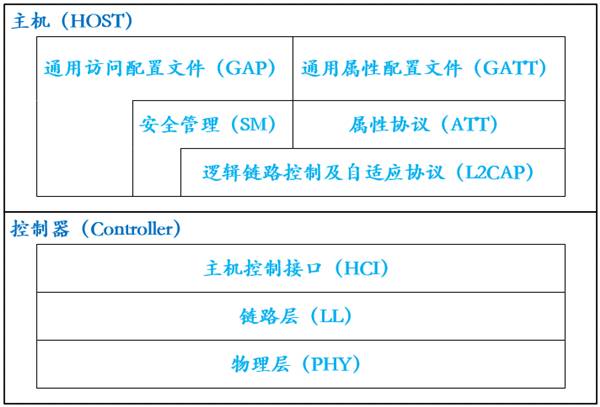- ArkTS与仓颉语言的深度解析(鸿蒙操作系统多设备)
爱学习的小齐哥哥
仓颉华为仓颉HarmonyOS5
一、引言随着物联网和智能设备的飞速发展,多设备协同开发成为当前软件开发领域的重要课题。鸿蒙操作系统作为面向全场景的分布式操作系统,为开发者提供了ArkTS和仓颉语言两种强大的开发工具,助力实现高效的多设备应用开发。本文将全面剖析这两种语言在鸿蒙多设备开发中的应用,探讨其优势、开发环境、实现一次开发多端部署的方法以及在不同设备上的性能表现和适配策略,并结合智能驾驶应用场景进行实例分析。二、ArkTS
- 世赛背景下,中职物联网应用与服务赛项实训解决方案
武汉唯众智创
物联网世赛物联网应用与服务世界职业院校技能大赛技能大赛物联网应用
一、世赛背景与物联网应用赛项概述1.1世赛发展历程及对中职教育的影响世界技能大赛(WorldSkillsCompetition,简称世赛)自1950年创立以来,已经成为全球范围内展示职业技能水平的重要赛事。截至2024年,世赛已成功举办46届,参赛国家和地区数量不断增加,从最初的20多个发展到如今的80多个,参赛选手超过1000名。世赛涵盖了从传统制造业到现代信息技术等众多领域,其中物联网应用与服
- 前端用MQTT协议通信的场景和好处
CreatorRay
前端网络面试前端MQTT网络协议物联网
上家公司中前端项目有用MQTT协议和硬件通信的场景,虽然很早就听说过MQTT协议,但是这是第一次在前端项目里基于MQTT协议做网络通信。当时没了解太多,工作中只做好了代码层面的工作,并没有深入了解MQTT协议的好处和适合的应用场景。在前端项目中,应该99%的情况都会基于HTTP和WebSocket来进行网络通信,使用MQTT在前端里确实比较小众。目前可能只会在物联网项目中,需要跟硬件通信的前提下,
- AIRIOT物联网低代码平台如何配置MQTT驱动?
AIRIOT
网络服务器物联网
MQTT驱动配置简介MQTT全称为消息队列遥测传输(英语:MessageQueuingTelemetryTransport),是ISO标准(ISO/IECPRF20922)下基于发布(Publish)/订阅(Subscribe)范式的消息协议,工作在TCP/IP协议族上。MQTT最大优点在于,可以用极少的数据和有限的带宽,为连接远程设备提供实时可靠的消息服务。作为一种低开销、低带宽占用的即时通讯协
- 简单介绍物联网MQTT协议
Zio_Zhou
计算机网络linux
在学习mqtt应用层协议之前,我们先来介绍一下发布/订阅模型以及请求/响应模型两种模型。请求/响应模型是网络应用系统中最常见的模型。在这种模型中,一个客户端(如一个Web浏览器)向服务器发送一个请求,服务器处理这个请求并返回一个响应。这个过程是同步的,意味着客户端需要等待服务器的响应。这种模型的优点是简单和易于理解,但在处理大量并发请求时可能会导致性能问题。发布/订阅模型。在这种模型中,有一个或多
- Nordic智能楼宇自动化系统方案/nrf-knx-iot
Halfway--
Product物联网iot
1:KNXIoT通过物联网(IoT)的强大功能和灵活性扩展了KNX标准的能力。因此,它允许KNX设备与物联网设备和云服务集成,从而能够创建先进的智能楼宇自动化系统。通过KNXIoT,设备可以在IP网络上进行通信,从而在设备连接和控制方式上提供更大的灵活性2:KNXIoT由3个主要负责数据互操作性的主要元素组成:KNXIoT第三方API一个标准化的API,通过一个抽象层连接KNX特定知识和第三方应用
- 无线USB转换器TOS-WLink的无线USB助手配置文件详细胡扯
开源的6lowpan
linux运维无线USB转换器无线调试器无线串口无线JLink
1,TOS无线USB助手配置文件tos.ini[Config]mode=autodev=BluetoothLE#BluetoothLE0c:9a:3c:69:e6:f4-b4:c2:e0:b1:2f:b4pd=jybdwjgxrgIP=192.168.1.29HB=10拿到货的或者在网盘公共区间看过TOS无线USB助手的,它目录下面是三个exe文件;和一个tos.ini配置文件;mode字段---
- 智能矿山建设方案(第三章)
珞圻-Health
信息化项目各类文档大全政务人工智能智慧城市
3总体设计3.1设计思路项目建设基于矿山现有的信息化基础,结合业务实际,智能矿山平台设计主要包括以下几方面内容:1.收集矿山的基础信息数据、物联网设备数据、业务系统数据、环境数据等,梳理数据的关联关系,再按照统一数据标准,进行加工处理,转换为符合要求的数据,并建立统一的数据库;2.建设三维地质孪生模型,依托三维建模渲染技术建立矿山虚拟映像,接入矿山的软硬件数据,做到1:1真实还原;3.建设智能矿山
- 从Node.js到Go:如何从NestJS丝滑切换并拥抱Sponge框架
引言各位NestJS老司机们,摸着良心说——用装饰器写API就像吃德芙一样丝滑对吧?@Controller一挂,@Get一贴,@Injectable一打,分分钟组装出企业级应用。TypeScript的类型体操更是让人安全感爆棚,还有CLI的nestg三连招,简直比咖啡续命还提神!但当你面对需要处理百万级并发的物联网数据网关,或是被老板要求把服务器成本砍掉60%时,是不是总想对着Node.js的事件
- 开发数字化绿色低碳园区系统:分阶段实施指南
Hy行者勇哥
绿色智造·产品设计与管理物联网华为云架构
目录摘要背景核心模块阶段性开发分阶段开发实施第一阶段(3-6个月):搭建核心骨架第二阶段(6-9个月):扩展功能第三阶段(9-12个月):深度定制技术选型注意事项实施计划表小结摘要数字化绿色低碳园区系统通过物联网、能源管理和数据分析等技术,实现节能减排和智慧管理。本文针对目前市场低迷,需求不振,开发资源有限的团队,提出基于低代码平台的开发策略,分为三阶段(核心骨架、功能扩展、深度优化),覆盖所有必
- 【国产操作系统对Qt支持有哪些?】
Qt历险记
Qt高级开发工程师qt开发语言
国产操作系统鸿蒙操作系统:由华为开发,主要用于智能设备和物联网领域。深度操作系统:基于Linux的操作系统,适用于个人电脑和服务器。中标麒麟:由中国电子科技集团公司研发,适用于服务器和桌面环境。悠然操作系统:面向教育和个人用户的Linux发行版。红旗Linux:早期较为知名的国产Linux发行版,现已不再更新。鸿蒙操作系统:鸿蒙OS支持Qt开发,尤其是在智能设备和物联网设备上。开发者可以使用Qt为
- 物联网pyqt5应用管理系统(Python、华为云)_python 基于pyqt的管理系统
2401_84010497
程序员物联网python华为云
产品简介:物联网应用管理系统是基于Python和PyQt5技术栈实现的应用端,旨在提供对烟感设备、水质设备和井盖设备等物联网设备的综合管理功能。该系统实现了设备管理、数据监控和远程控制等功能,并通过华为云平台实现了数据存储和云服务支持。主要功能:设备管理:系统支持对烟感设备、水质设备和井盖设备等物联网设备进行集中管理。用户可以查询数据信息,监测设备状态和报警信息进行下发报警操作。数据监控:通过系统
- 时序数据库选型分析
沉默的松饼
时序数据库物联网
在当今数字化时代,大量的时间序列数据不断产生,从工业物联网设备的传感器数据,到金融领域的交易记录,再到互联网应用的用户行为日志等。为了高效地存储、管理和分析这些时序数据,选择一款合适的时序数据库至关重要。本文将对几款主流的时序数据库进行选型分析,帮助读者在众多选项中找到最符合自身需求的数据库解决方案。常见时序数据库概述InfluxDBInfluxDB是一款广泛使用的开源时序数据库。它专为处理时间序
- 深入解析设备管理系统新趋势:物联网与云原生驱动的智能化实践
Moriyu_elk_
物联网云原生设备管理系统IT行业分析
设备管理作为数字化、智能化基础设施的重要一环,在制造业、智慧城市、医疗、楼宇等领域都扮演着核心角色。伴随物联网(IoT)和云原生(CloudNative)技术的飞速发展,设备管理正在迈向新阶段。本文探讨新一代设备管理系统的架构演变、主流技术方案,以及开发落地的关键注意事项,并结合行业常见的一些平台进行案例参考。一、设备管理为何越来越重要?在万物互联的趋势下,工业传感器、各类网关、摄像头及消费类智能
- EMQX以及用MQTT的测试和性能测试
yiyang1208
linux服务器运维
产品的概念:EMQX是开源百万级分布式MQTT消息服务器(MQTTMessagingBroker),用于支持各种接入标准MQTT协议的设备,实现从设备端到服务器端的消息传递,以及从服务器端到设备端的设备控制消息转发。从而实现物联网设备的数据采集,和对设备的操作和控制。优势:开放源码:基于Apache2.0许可证完全开源,自2013年起200+开源版本迭代。MQTT5.0:100%支持MQTT5.0
- EMQX-简介、安装部署、基础功能、python代码测试
a_安徒生
#emqx开源组件python网络协议中间件
EMQX记录文档一、EMQX简介MQTT属于是物联网的通信协议,在MQTT协议中有两大角色:客户端(发布者/订阅者),服务端(Mqttbroker);针对客户端和服务端需要有遵循该协议的的具体实现,EMQ/EMQX就是MQTTBroker的一种实现。1、EMQX是什么EMQX基于Erlang/OTP平台开发的MQTT消息服务器,是开源社区中最流行的MQTT消息服务器。EMQX是开源百万级分布式MQ
- EMQ X 认证鉴权(二)- EMQ X 中 MQTT 连接认证核心概念与配置要点
EMQX
认证鉴权
前言安全保护几乎对于所有的项目都是一个挑战,对于物联网项目更是如,自普及应用以来物联网业内已经发生过多起安全事故。作为物联网通信协议事实标准,**MQTT协议**保持着较高的安全性,提供了多层次的安全设计:传输层:MQTT基于TCP/IP协议,可以在传输层上使用SSL/TLS进行加密传输:使用SSL/TLS加密通信数据,防止中间人攻击;使用客户端证书作为设备身份凭证,验证设备合法性。应用层:使用M
- webman 利用tcp 做服务端 对接物联网
两个人的幸福online
tcp/ipandroid网络协议
用webman建立tcp的服务端安装webman安装composerrequirewebman/gateway-worker文件:config/plugin/webman/gateway-worker/process.php这里定义了两个协议,tcp用来对接物联网,ws用来对接im['handler'=>Gateway::class,'listen'=>'websocket://0.0.0.0:7
- 物联网协议全解析:一文读懂IoT通信的“语言体系”
二十十十十十
物联网
随着物联网技术的迅猛发展,连接设备数量持续增长,如何让这些设备“听得懂”“说得通”,成为物联网系统设计的核心问题。而这背后的关键技术,正是通信协议。本文将系统介绍物联网中常见的协议类型、主要代表、适用场景及优劣分析,帮助开发者在实际项目中做出更科学的选择。一、物联网通信协议概览物联网协议根据通信层级可以大致分为以下三类:分类主要作用举例感知层协议(物理/链路层)设备与设备之间的数据采集与初步传输Z
- 物联网与AI驱动的智能宿舍管理解决方案
本文还有配套的精品资源,点击获取简介:智能宿舍管理系统通过物联网、云计算和人工智能技术相结合,提高宿舍管理效率和学生住宿体验。该系统集成了智能门锁、传感器、能源管理系统等硬件设备,并与软件平台结合实现远程监控、自动化控制和数据分析。它还包含了实时监控、数据处理、远程操作、智能分析、异常检测和用户画像等功能,以确保高效管理、安全性和个性化服务。此外,系统设计注重加密通信、访问控制和隐私保护,以保障数
- 鸿蒙OH南向开发 小型系统内核(LiteOS-A)【概述】
yx525623
鸿蒙开发openharmony鸿蒙南向鸿蒙开发openharmonyharmonyos鸿蒙南向嵌入式硬件
简介OpenHarmony轻量级内核是基于IoT领域轻量级物联网操作系统HuaweiLiteOS内核演进发展的新一代内核,包含LiteOS-M和LiteOS-A两类内核。LiteOS-M内核主要应用于轻量系统,面向的MCU(MicroprocessorUnit)一般是百K级内存,可支持MPU(MemoryProtectionUnit)隔离,业界类似的内核有FreeRTOS或ThreadX等;Lit
- 【android bluetooth 协议分析 02】【bluetooth hal 层详解 6】【bt_vendor_opcode_t 介绍】
奔跑吧 android
android15蓝牙协议栈分析androidbthalaosp13hidl_1.0
bt_vendor_opcode_t介绍在AOSP的BluetoothVendor接口中,bt_vendor_opcode_t定义了一组供上层调用的操作指令。这些操作在蓝牙初始化、使用和关闭过程中由协议栈(如Bluedroid)驱动调用,按照一定的顺序执行。这些枚举项代表VendorInterfaceAPI的操作码,协议栈通过调用vendor_call()接口并传入这些opcodes来控制蓝牙芯片
- 【android bluetooth 协议分析 02】【bluetooth hal 层详解 3】【高通蓝牙hal主要流程介绍-上】
奔跑吧 android
android15蓝牙协议栈分析androidbt_hal_1.0qcomqcom_btbluetooth高通蓝牙hal
1.背景本节主要讨论高通蓝牙hal中,的一些流程。看看你是否都清楚如下问题:高通芯片电如何控制?串口是在哪里控制的?固件如何下载?初始化流程是怎么样的?如果你已经对上述讨论的问题,已经很清楚了,那你无需阅读该文章,请自行忽略。当然,也可以给笨叔挑挑错。欢迎评论,一起探讨,毕竟都是笨叔自己的理解,难免有点出入,我也想进步!!!在阅读这篇文章之前,可以先阅读一下两篇文章。【androidbluetoo
- 数字经济中的创业生态:创新孵化与风险投资的平衡
AI天才研究院
AI人工智能与大数据ai
数字经济的定义与发展历程1.1数字经济的定义数字经济,是指基于数字技术特别是互联网和移动通信技术所创造的新经济形态。它不仅涵盖了传统产业的信息化和数字化,还包括新兴产业的创新发展,例如电子商务、物联网、大数据、人工智能等。数字经济主要通过数据流动、信息交换和知识共享实现价值的创造和传递。1.1.1数字经济的内涵数字经济的内涵主要表现在以下几个方面:数据驱动的生产方式:通过大数据分析和人工智能算法,
- 【AI+安防技术革命】物联网创业避坑指南:从200万沉没成本到0元启动的启示!
商业智慧经
物联网
【创业生意经】巴菲特说"投资要选择长长的坡道和湿湿的雪",选错赛道的创业者就像推石头上山——累死累活还容易砸脚!今天给你看个活生生的对比:一.血泪案例:传统健身房就是个吞金兽!想开家像样的健身房?300平场地年租金30万起,器材采购少说50万,教练团队每月工资5万+,没200万本金根本不敢碰!更可怕的是会员卡卖不动就血亏,经济不好多少老板赔得只剩哑铃?而格行视精灵室外摄像头搞的是"轻骑兵"模式——
- Websocket 在网络与通信中的物联网应用
AI算力网络与通信
AI算力网络与通信原理AI人工智能大数据架构网络websocket物联网ai
Websocket在网络与通信中的物联网应用关键词:Websocket、网络与通信、物联网、实时通信、数据传输摘要:本文深入探讨了Websocket在网络与通信的物联网应用领域的相关内容。首先介绍了Websocket和物联网的背景知识,包括目的范围、预期读者等。接着阐述了Websocket的核心概念与原理,以及其与物联网的联系。详细讲解了Websocket在物联网应用中的核心算法原理和具体操作步骤
- C# WPF IoTClient与三菱PLC通讯详解
zls365365
c#wpf开发语言
在C#WPF应用程序中,与三菱PLC进行通信是一个常见的需求,尤其是在工业自动化和物联网(IoT)领域。以下是三种实现WPF上位机与三菱PLC通信同步的方式,每种方式都提供了代码实例、优缺点和使用场景。1.使用三菱MXComponent代码示例://假设已经通过MXComponent配置了与PLC的连接privatevoidReadFromPlc(){//读取操作bool[]readData=pl
- 碰一碰发视频源码开发,支持OEM
】余18538162800
音视频
在物联网与移动互联技术飞速发展的当下,“碰一碰发视频”功能凭借其便捷性与趣味性,成为众多智能设备交互的新亮点。从社交场景中的短视频分享,到商业展示中的宣传视频传输,该功能的实现涉及多技术融合。本文将结合具体代码,深入讲解碰一碰发视频源码开发的全流程,助力开发者快速上手。一、核心技术原理与选型1.1近场通信(NFC)技术NFC技术基于13.56MHz频段,通过电磁感应耦合实现设备间的短距离数据交换,
- LoRaWAN 网关支持 私有的服务器链接吗?
豆豆在西安
服务器运维
从技术角度来看,LoRaWAN网关是支持连接私有服务器的。网关本质上是一个数据透传设备,它负责将终端设备发送的LoRa信号接收并转发给上层服务器。因此,只要具备相应的开发能力和协议理解,用户完全可以将网关连接到自建的私有服务器上,而不使用标准的LoRaWAN网络服务器[1]。然而,虽然技术上可行,但在实际操作中并没有太大意义。LoRaWAN协议已经为物联网通信提供了完整的解决方案,包括设备入网鉴权
- 一机多用,解耦未来!如何一站式搞定中小企业网络、路由、安全
星融元asterfusion
网络安全智能网关
随着云计算、大数据、AI与物联网技术的爆发式增长,传统企业网络面临多重挑战:出口需部署路由器、防火墙、VPN网关、IDS/IPS、负载均衡器等独立设备,导致架构复杂、成本高且运维困难。基于开放架构的智能业务处理平台,通过算网融合芯片与模块化设计,实现软硬件解耦,将网络、路由、安全等功能集成于单一设备,为中小企业提供高性能、易维护的一体化解决方案。硬件设计:灵活扩展,性能强劲机身:220×310×4
- Java序列化进阶篇
g21121
java序列化
1.transient
类一旦实现了Serializable 接口即被声明为可序列化,然而某些情况下并不是所有的属性都需要序列化,想要人为的去阻止这些属性被序列化,就需要用到transient 关键字。
- escape()、encodeURI()、encodeURIComponent()区别详解
aigo
JavaScriptWeb
原文:http://blog.sina.com.cn/s/blog_4586764e0101khi0.html
JavaScript中有三个可以对字符串编码的函数,分别是: escape,encodeURI,encodeURIComponent,相应3个解码函数:,decodeURI,decodeURIComponent 。
下面简单介绍一下它们的区别
1 escape()函
- ArcgisEngine实现对地图的放大、缩小和平移
Cb123456
添加矢量数据对地图的放大、缩小和平移Engine
ArcgisEngine实现对地图的放大、缩小和平移:
个人觉得是平移,不过网上的都是漫游,通俗的说就是把一个地图对象从一边拉到另一边而已。就看人说话吧.
具体实现:
一、引入命名空间
using ESRI.ArcGIS.Geometry;
using ESRI.ArcGIS.Controls;
二、代码实现.
- Java集合框架概述
天子之骄
Java集合框架概述
集合框架
集合框架可以理解为一个容器,该容器主要指映射(map)、集合(set)、数组(array)和列表(list)等抽象数据结构。
从本质上来说,Java集合框架的主要组成是用来操作对象的接口。不同接口描述不同的数据类型。
简单介绍:
Collection接口是最基本的接口,它定义了List和Set,List又定义了LinkLi
- 旗正4.0页面跳转传值问题
何必如此
javajsp
跳转和成功提示
a) 成功字段非空forward
成功字段非空forward,不会弹出成功字段,为jsp转发,页面能超链接传值,传输变量时需要拼接。接拼接方式list.jsp?test="+strweightUnit+"或list.jsp?test="+weightUnit+&qu
- 全网唯一:移动互联网服务器端开发课程
cocos2d-x小菜
web开发移动开发移动端开发移动互联程序员
移动互联网时代来了! App市场爆发式增长为Web开发程序员带来新一轮机遇,近两年新增创业者,几乎全部选择了移动互联网项目!传统互联网企业中超过98%的门户网站已经或者正在从单一的网站入口转向PC、手机、Pad、智能电视等多端全平台兼容体系。据统计,AppStore中超过85%的App项目都选择了PHP作为后端程
- Log4J通用配置|注意问题 笔记
7454103
DAOapachetomcatlog4jWeb
关于日志的等级 那些去 百度就知道了!
这几天 要搭个新框架 配置了 日志 记下来 !做个备忘!
#这里定义能显示到的最低级别,若定义到INFO级别,则看不到DEBUG级别的信息了~!
log4j.rootLogger=INFO,allLog
# DAO层 log记录到dao.log 控制台 和 总日志文件
log4j.logger.DAO=INFO,dao,C
- SQLServer TCP/IP 连接失败问题 ---SQL Server Configuration Manager
darkranger
sqlcwindowsSQL ServerXP
当你安装完之后,连接数据库的时候可能会发现你的TCP/IP 没有启动..
发现需要启动客户端协议 : TCP/IP
需要打开 SQL Server Configuration Manager...
却发现无法打开 SQL Server Configuration Manager..??
解决方法: C:\WINDOWS\system32目录搜索framedyn.
- [置顶] 做有中国特色的程序员
aijuans
程序员
从出版业说起 网络作品排到靠前的,都不会太难看,一般人不爱看某部作品也是因为不喜欢这个类型,而此人也不会全不喜欢这些网络作品。究其原因,是因为网络作品都是让人先白看的,看的好了才出了头。而纸质作品就不一定了,排行榜靠前的,有好作品,也有垃圾。 许多大牛都是写了博客,后来出了书。这些书也都不次,可能有人让为不好,是因为技术书不像小说,小说在读故事,技术书是在学知识或温习知识,有些技术书读得可
- document.domain 跨域问题
avords
document
document.domain用来得到当前网页的域名。比如在地址栏里输入:javascript:alert(document.domain); //www.315ta.com我们也可以给document.domain属性赋值,不过是有限制的,你只能赋成当前的域名或者基础域名。比如:javascript:alert(document.domain = "315ta.com");
- 关于管理软件的一些思考
houxinyou
管理
工作好多看年了,一直在做管理软件,不知道是我最开始做的时候产生了一些惯性的思维,还是现在接触的管理软件水平有所下降.换过好多年公司,越来越感觉现在的管理软件做的越来越乱.
在我看来,管理软件不论是以前的结构化编程,还是现在的面向对象编程,不管是CS模式,还是BS模式.模块的划分是很重要的.当然,模块的划分有很多种方式.我只是以我自己的划分方式来说一下.
做为管理软件,就像现在讲究MVC这
- NoSQL数据库之Redis数据库管理(String类型和hash类型)
bijian1013
redis数据库NoSQL
一.Redis的数据类型
1.String类型及操作
String是最简单的类型,一个key对应一个value,string类型是二进制安全的。Redis的string可以包含任何数据,比如jpg图片或者序列化的对象。
Set方法:设置key对应的值为string类型的value
- Tomcat 一些技巧
征客丶
javatomcatdos
以下操作都是在windows 环境下
一、Tomcat 启动时配置 JAVA_HOME
在 tomcat 安装目录,bin 文件夹下的 catalina.bat 或 setclasspath.bat 中添加
set JAVA_HOME=JAVA 安装目录
set JRE_HOME=JAVA 安装目录/jre
即可;
二、查看Tomcat 版本
在 tomcat 安装目
- 【Spark七十二】Spark的日志配置
bit1129
spark
在测试Spark Streaming时,大量的日志显示到控制台,影响了Spark Streaming程序代码的输出结果的查看(代码中通过println将输出打印到控制台上),可以通过修改Spark的日志配置的方式,不让Spark Streaming把它的日志显示在console
在Spark的conf目录下,把log4j.properties.template修改为log4j.p
- Haskell版冒泡排序
bookjovi
冒泡排序haskell
面试的时候问的比较多的算法题要么是binary search,要么是冒泡排序,真的不想用写C写冒泡排序了,贴上个Haskell版的,思维简单,代码简单,下次谁要是再要我用C写冒泡排序,直接上个haskell版的,让他自己去理解吧。
sort [] = []
sort [x] = [x]
sort (x:x1:xs)
| x>x1 = x1:so
- java 路径 配置文件读取
bro_feng
java
这几天做一个项目,关于路径做如下笔记,有需要供参考。
取工程内的文件,一般都要用相对路径,这个自然不用多说。
在src统计目录建配置文件目录res,在res中放入配置文件。
读取文件使用方式:
1. MyTest.class.getResourceAsStream("/res/xx.properties")
2. properties.load(MyTest.
- 读《研磨设计模式》-代码笔记-简单工厂模式
bylijinnan
java设计模式
声明: 本文只为方便我个人查阅和理解,详细的分析以及源代码请移步 原作者的博客http://chjavach.iteye.com/
package design.pattern;
/*
* 个人理解:简单工厂模式就是IOC;
* 客户端要用到某一对象,本来是由客户创建的,现在改成由工厂创建,客户直接取就好了
*/
interface IProduct {
- SVN与JIRA的关联
chenyu19891124
SVN
SVN与JIRA的关联一直都没能装成功,今天凝聚心思花了一天时间整合好了。下面是自己整理的步骤:
一、搭建好SVN环境,尤其是要把SVN的服务注册成系统服务
二、装好JIRA,自己用是jira-4.3.4破解版
三、下载SVN与JIRA的插件并解压,然后拷贝插件包下lib包里的三个jar,放到Atlassian\JIRA 4.3.4\atlassian-jira\WEB-INF\lib下,再
- JWFDv0.96 最新设计思路
comsci
数据结构算法工作企业应用公告
随着工作流技术的发展,工作流产品的应用范围也不断的在扩展,开始进入了像金融行业(我已经看到国有四大商业银行的工作流产品招标公告了),实时生产控制和其它比较重要的工程领域,而
- vi 保存复制内容格式粘贴
daizj
vi粘贴复制保存原格式不变形
vi是linux中非常好用的文本编辑工具,功能强大无比,但对于复制带有缩进格式的内容时,粘贴的时候内容错位很严重,不会按照复制时的格式排版,vi能不能在粘贴时,按复制进的格式进行粘贴呢? 答案是肯定的,vi有一个很强大的命令可以实现此功能 。
在命令模式输入:set paste,则进入paste模式,这样再进行粘贴时
- shell脚本运行时报错误:/bin/bash^M: bad interpreter 的解决办法
dongwei_6688
shell脚本
出现原因:windows上写的脚本,直接拷贝到linux系统上运行由于格式不兼容导致
解决办法:
1. 比如文件名为myshell.sh,vim myshell.sh
2. 执行vim中的命令 : set ff?查看文件格式,如果显示fileformat=dos,证明文件格式有问题
3. 执行vim中的命令 :set fileformat=unix 将文件格式改过来就可以了,然后:w
- 高一上学期难记忆单词
dcj3sjt126com
wordenglish
honest 诚实的;正直的
argue 争论
classical 古典的
hammer 锤子
share 分享;共有
sorrow 悲哀;悲痛
adventure 冒险
error 错误;差错
closet 壁橱;储藏室
pronounce 发音;宣告
repeat 重做;重复
majority 大多数;大半
native 本国的,本地的,本国
- hibernate查询返回DTO对象,DTO封装了多个pojo对象的属性
frankco
POJOhibernate查询DTO
DTO-数据传输对象;pojo-最纯粹的java对象与数据库中的表一一对应。
简单讲:DTO起到业务数据的传递作用,pojo则与持久层数据库打交道。
有时候我们需要查询返回DTO对象,因为DTO
- Partition List
hcx2013
partition
Given a linked list and a value x, partition it such that all nodes less than x come before nodes greater than or equal to x.
You should preserve the original relative order of th
- Spring MVC测试框架详解——客户端测试
jinnianshilongnian
上一篇《Spring MVC测试框架详解——服务端测试》已经介绍了服务端测试,接下来再看看如果测试Rest客户端,对于客户端测试以前经常使用的方法是启动一个内嵌的jetty/tomcat容器,然后发送真实的请求到相应的控制器;这种方式的缺点就是速度慢;自Spring 3.2开始提供了对RestTemplate的模拟服务器测试方式,也就是说使用RestTemplate测试时无须启动服务器,而是模拟一
- 关于推荐个人观点
liyonghui160com
推荐系统关于推荐个人观点
回想起来,我也做推荐了3年多了,最近公司做了调整招聘了很多算法工程师,以为需要多么高大上的算法才能搭建起来的,从实践中走过来,我只想说【不是这样的】
第一次接触推荐系统是在四年前入职的时候,那时候,机器学习和大数据都是没有的概念,什么大数据处理开源软件根本不存在,我们用多台计算机web程序记录用户行为,用.net的w
- 不间断旋转的动画
pangyulei
动画
CABasicAnimation* rotationAnimation;
rotationAnimation = [CABasicAnimation animationWithKeyPath:@"transform.rotation.z"];
rotationAnimation.toValue = [NSNumber numberWithFloat: M
- 自定义annotation
sha1064616837
javaenumannotationreflect
对象有的属性在页面上可编辑,有的属性在页面只可读,以前都是我们在页面上写死的,时间一久有时候会混乱,此处通过自定义annotation在类属性中定义。越来越发现Java的Annotation真心很强大,可以帮我们省去很多代码,让代码看上去简洁。
下面这个例子 主要用到了
1.自定义annotation:@interface,以及几个配合着自定义注解使用的几个注解
2.简单的反射
3.枚举
- Spring 源码
up2pu
spring
1.Spring源代码
https://github.com/SpringSource/spring-framework/branches/3.2.x
注:兼容svn检出
2.运行脚本
import-into-eclipse.bat
注:需要设置JAVA_HOME为jdk 1.7
build.gradle
compileJava {
sourceCompatibilit
- 利用word分词来计算文本相似度
yangshangchuan
wordword分词文本相似度余弦相似度简单共有词
word分词提供了多种文本相似度计算方式:
方式一:余弦相似度,通过计算两个向量的夹角余弦值来评估他们的相似度
实现类:org.apdplat.word.analysis.CosineTextSimilarity
用法如下:
String text1 = "我爱购物";
String text2 = "我爱读书";
String text3 =


